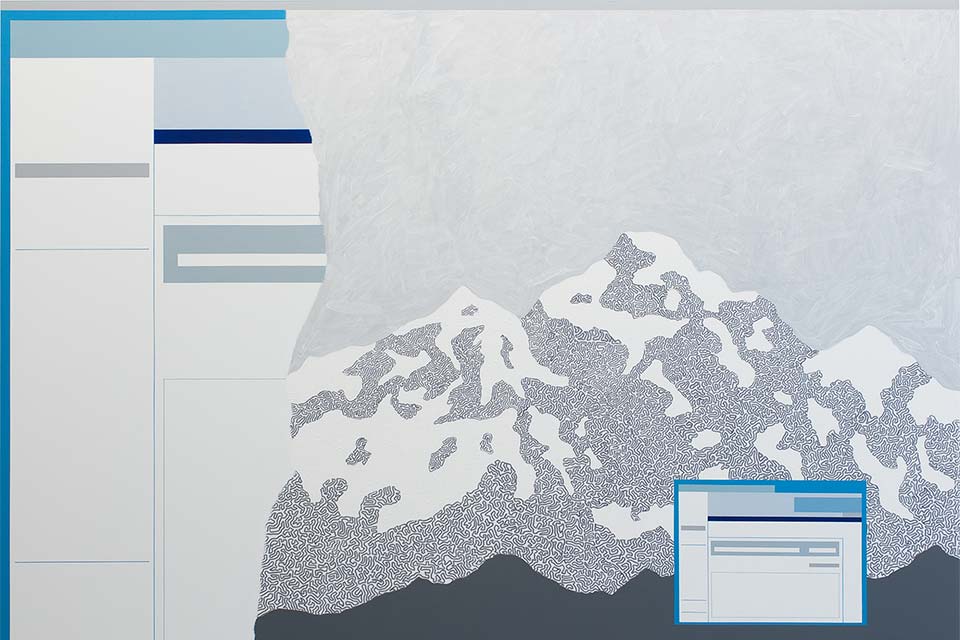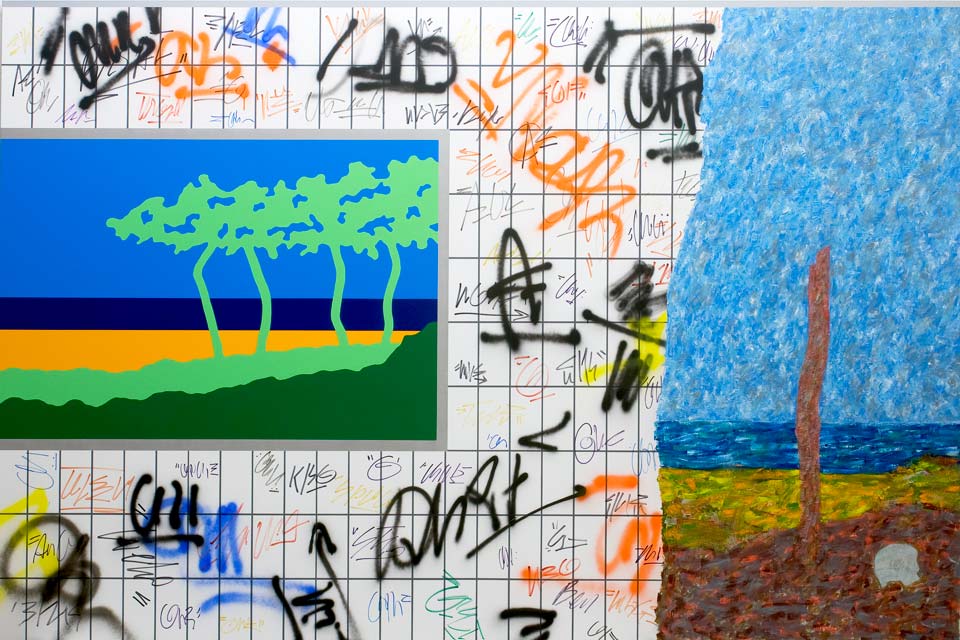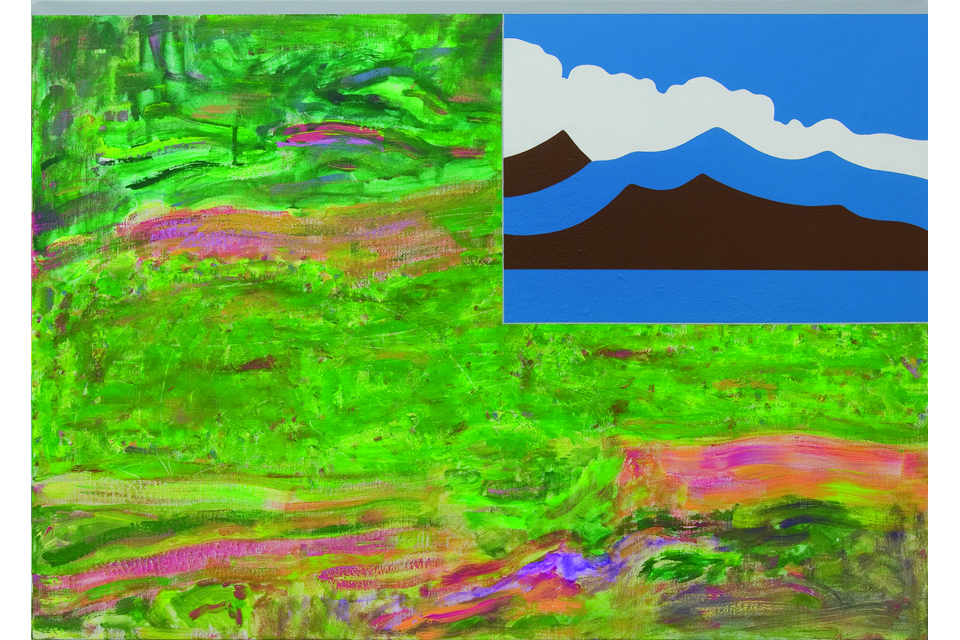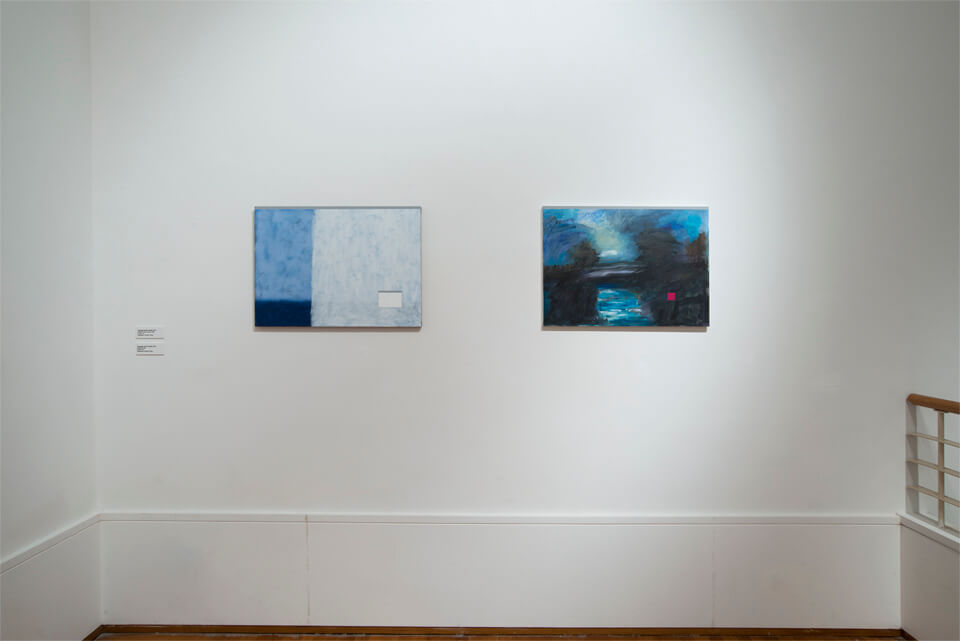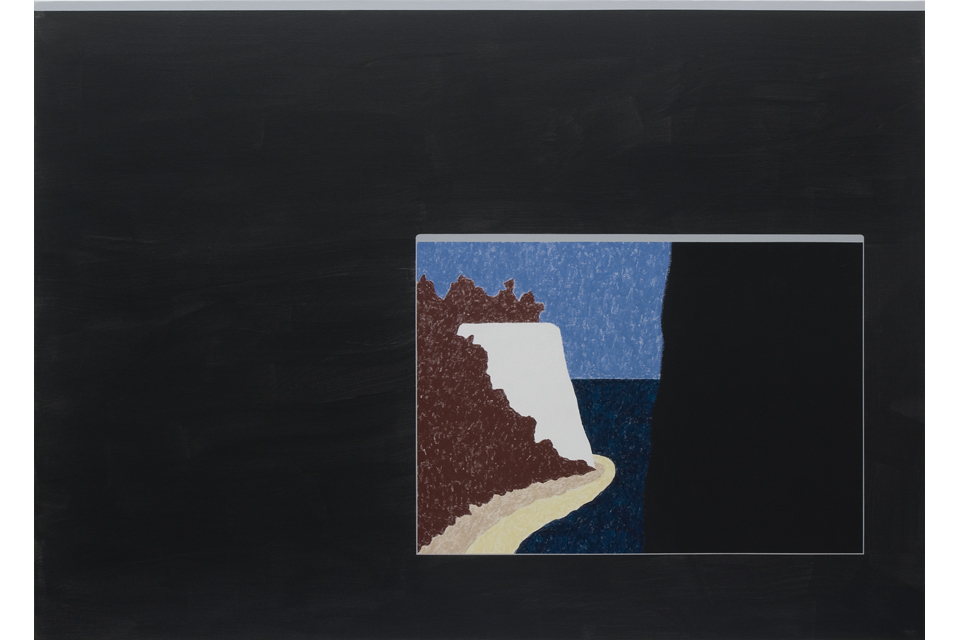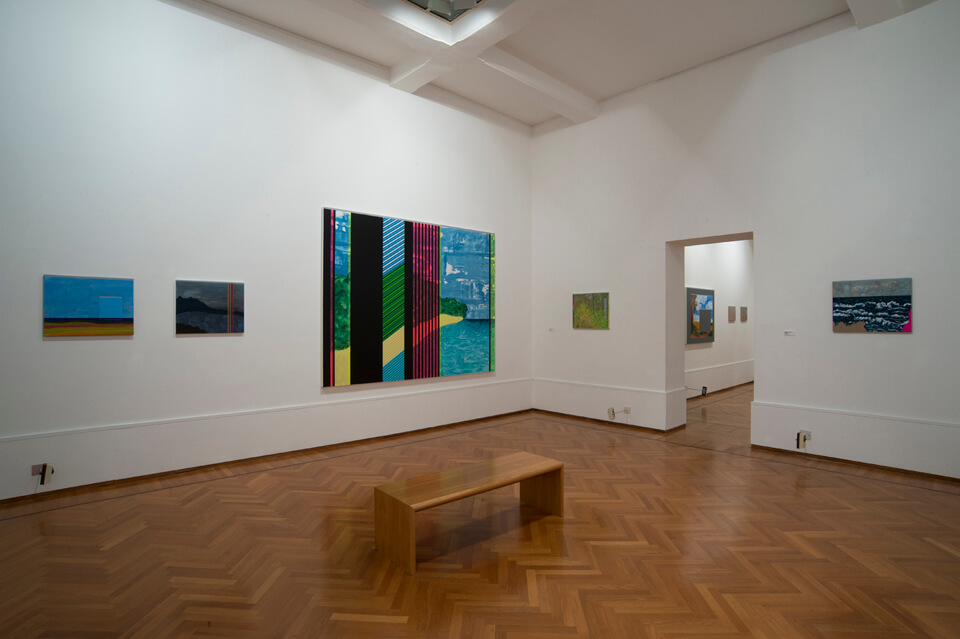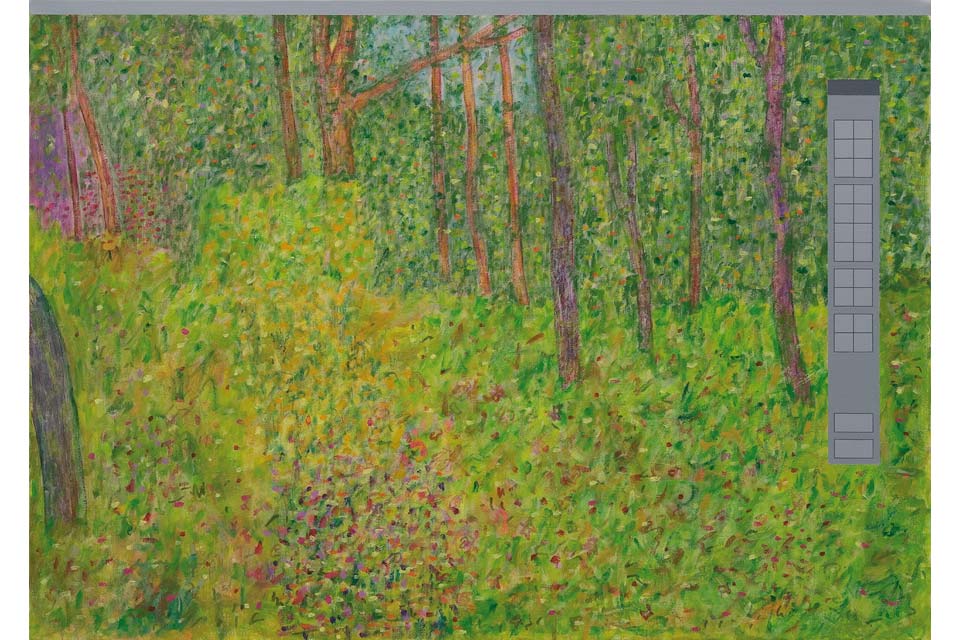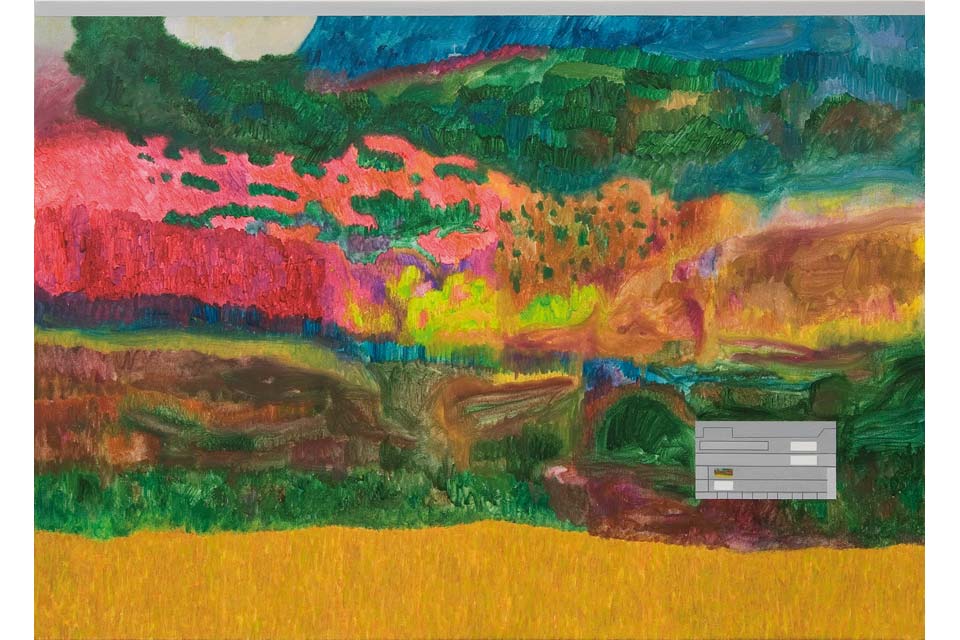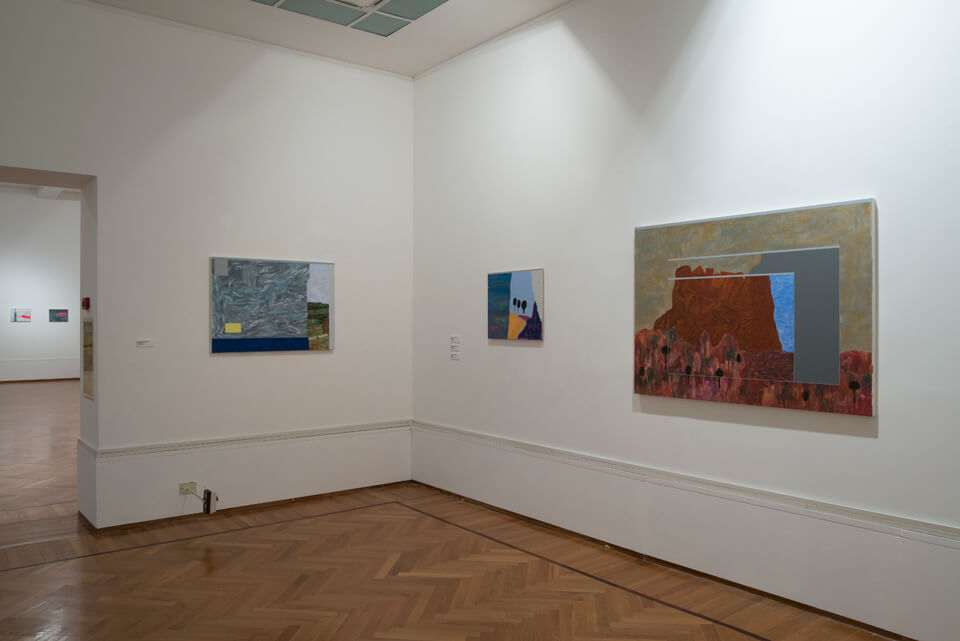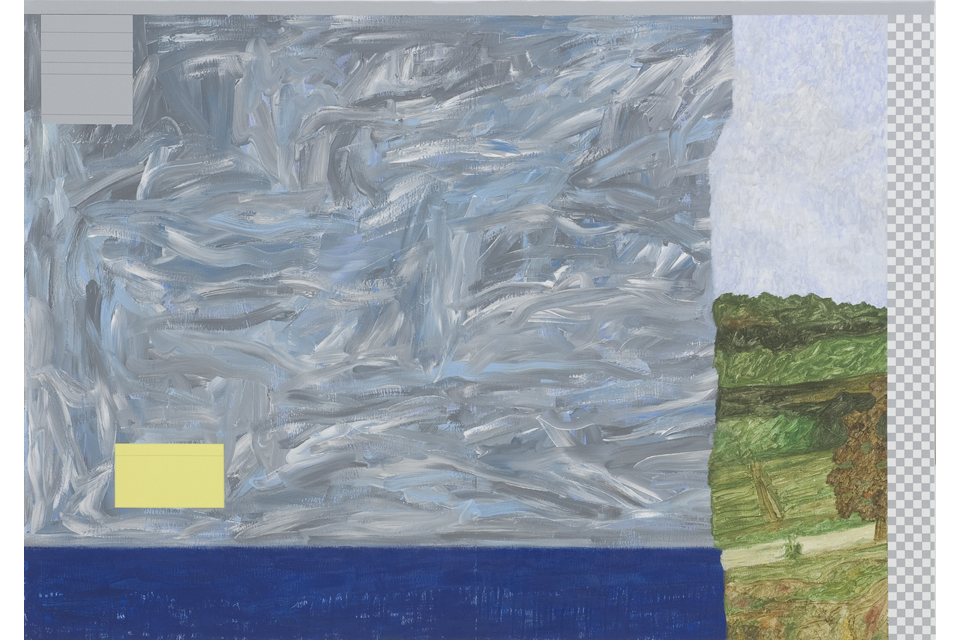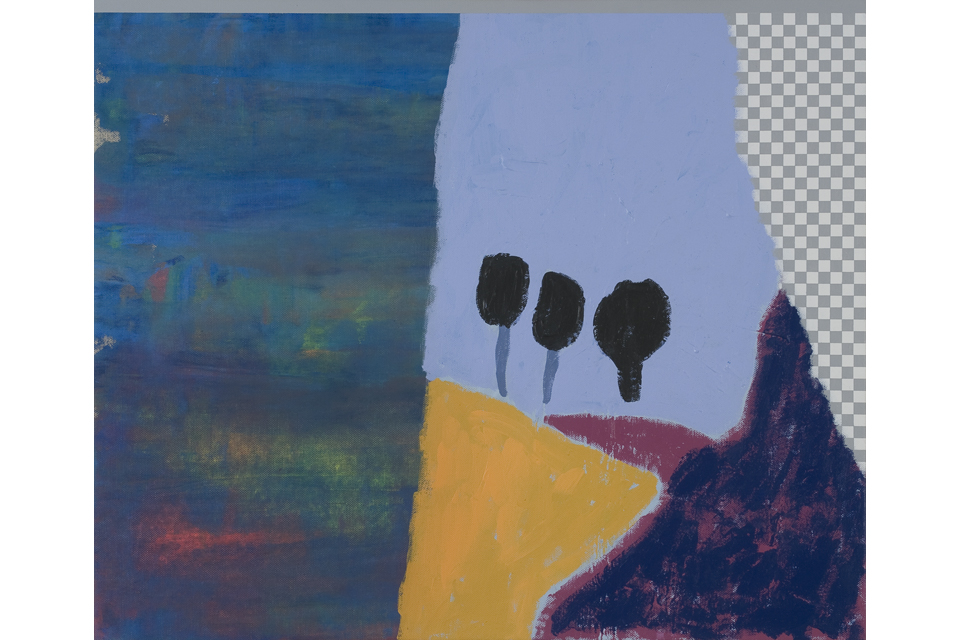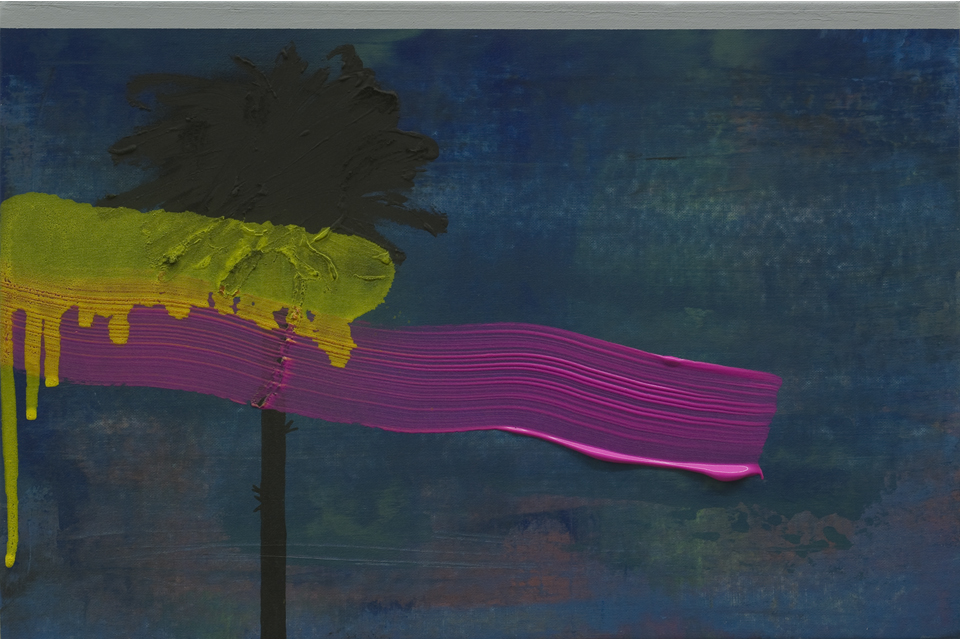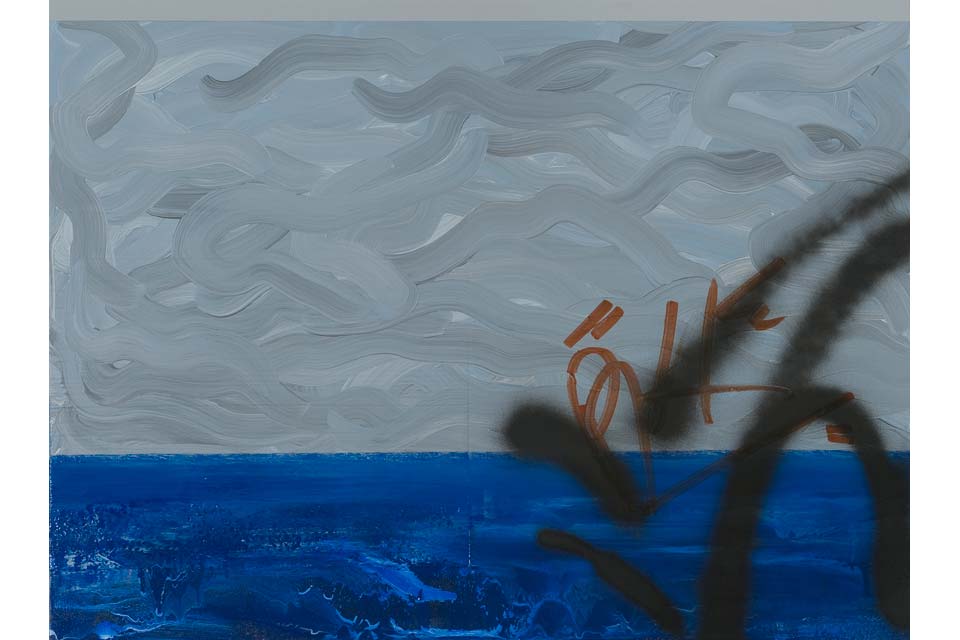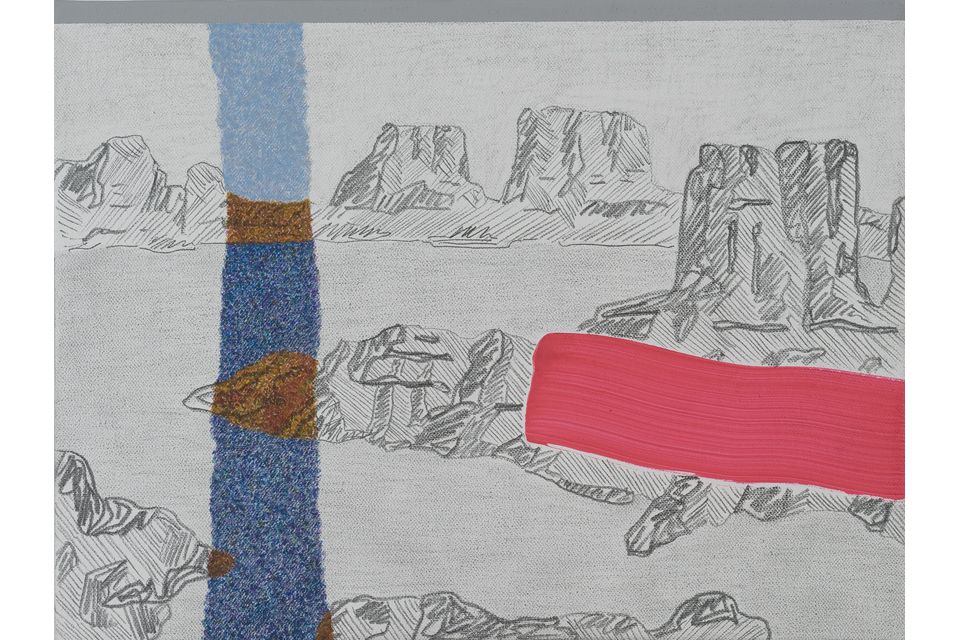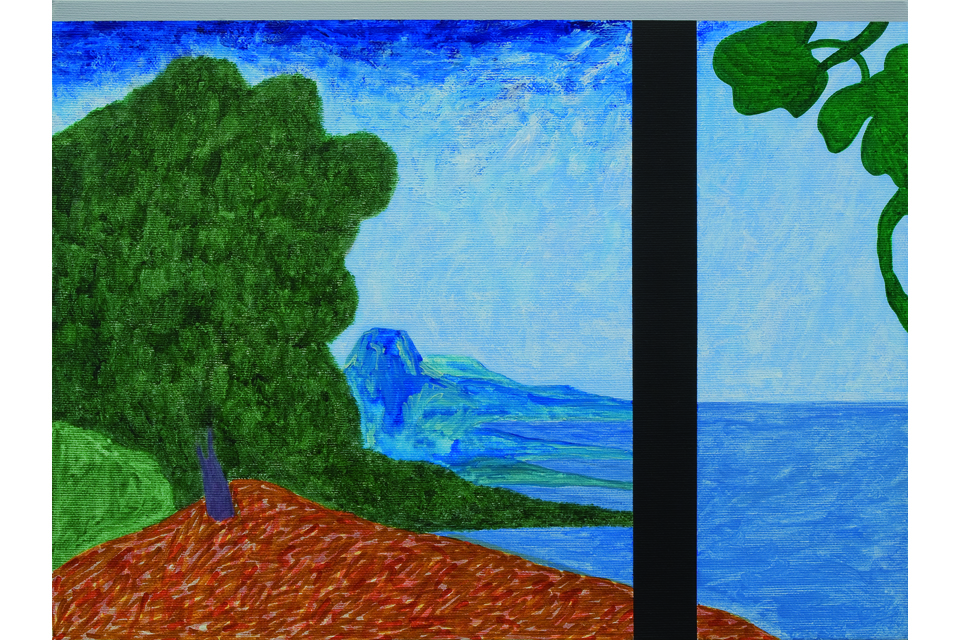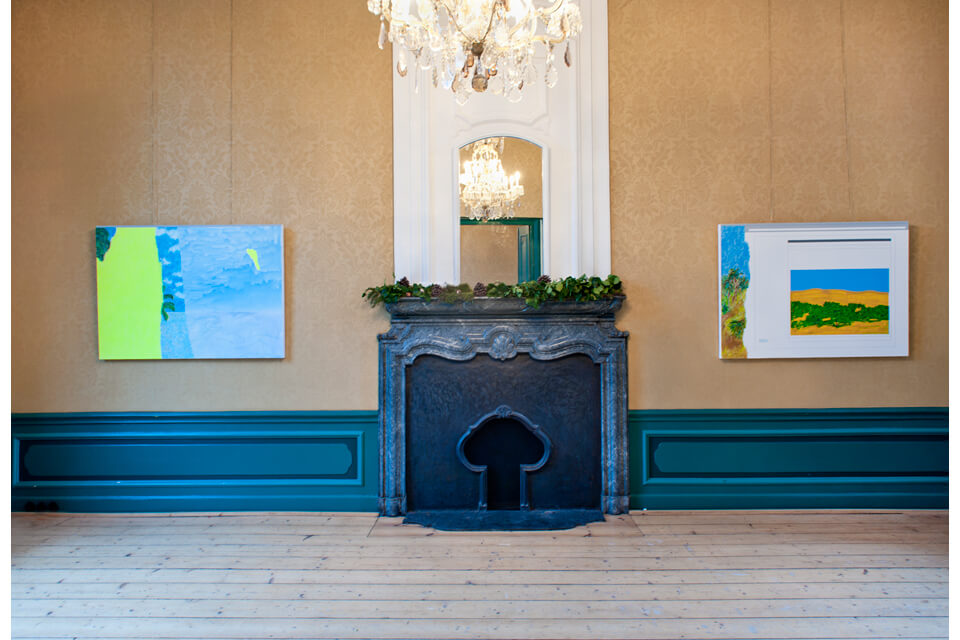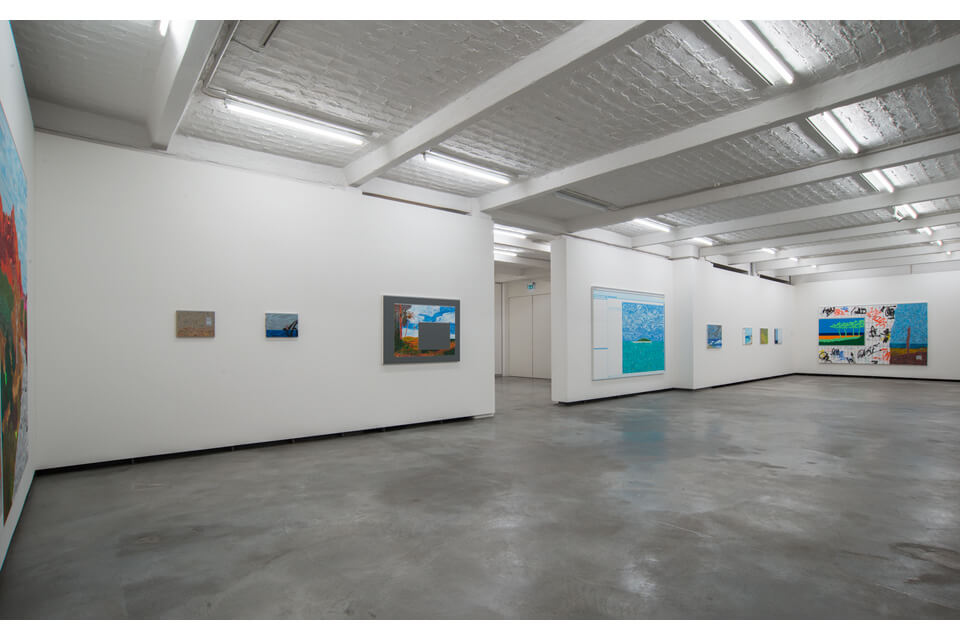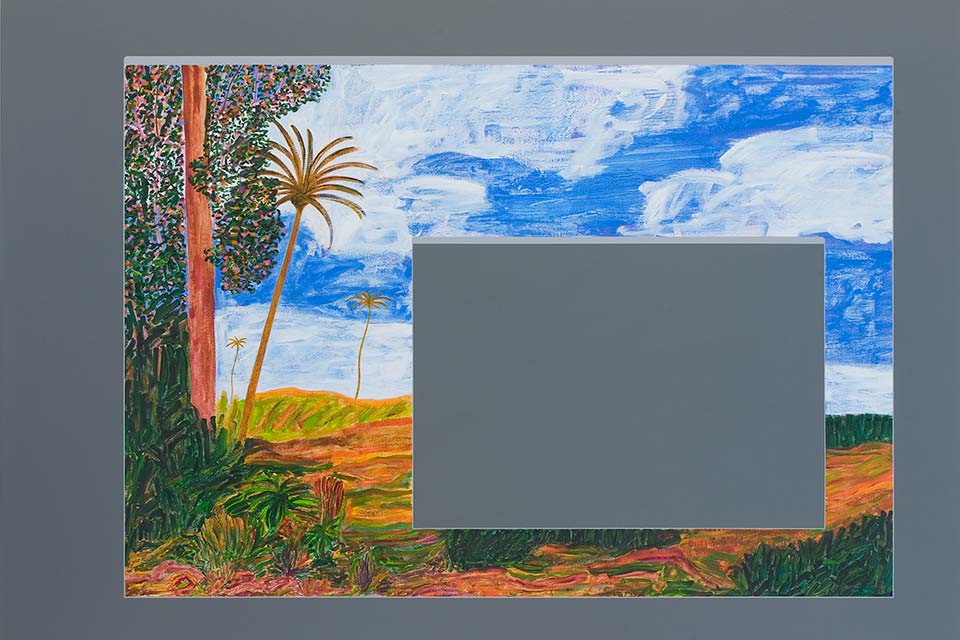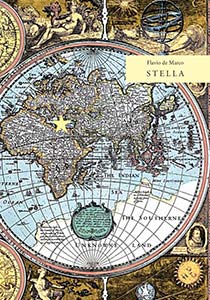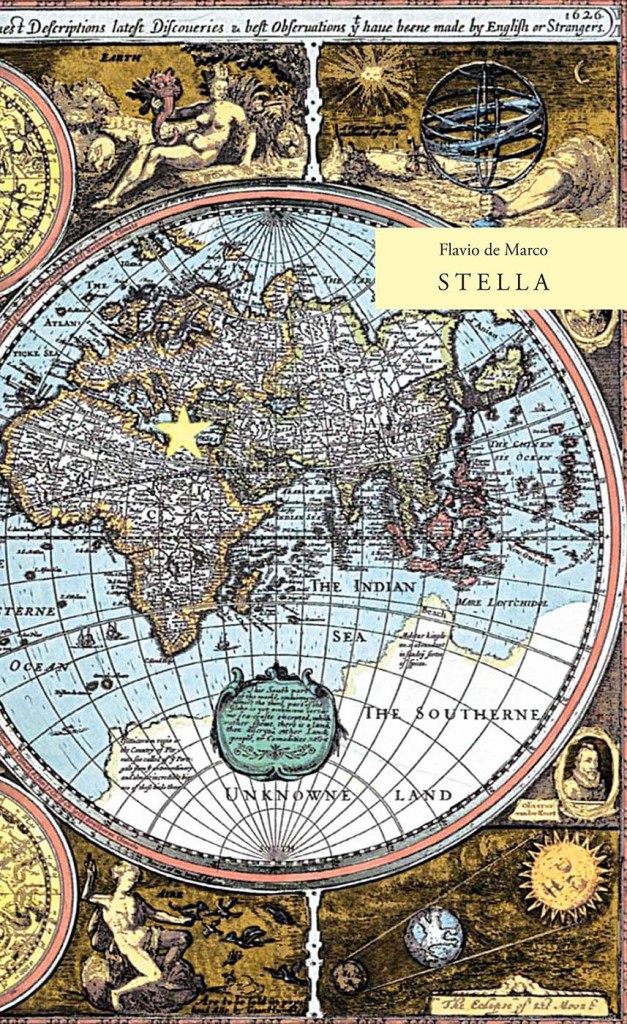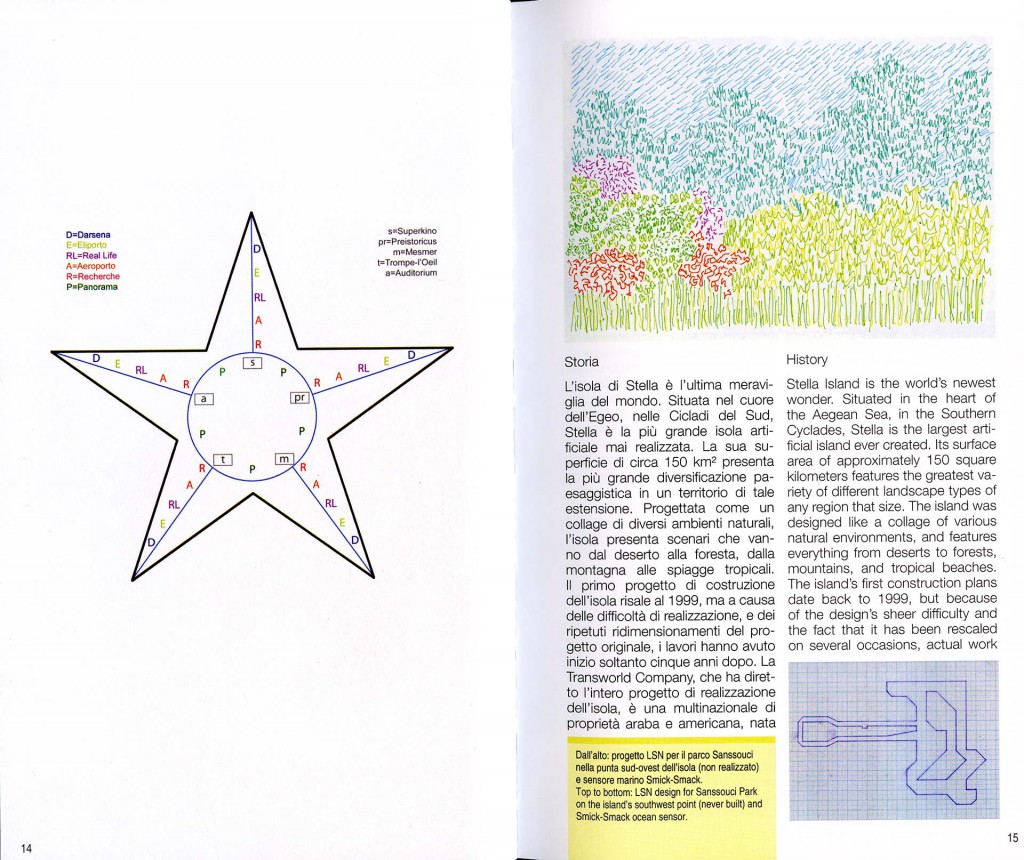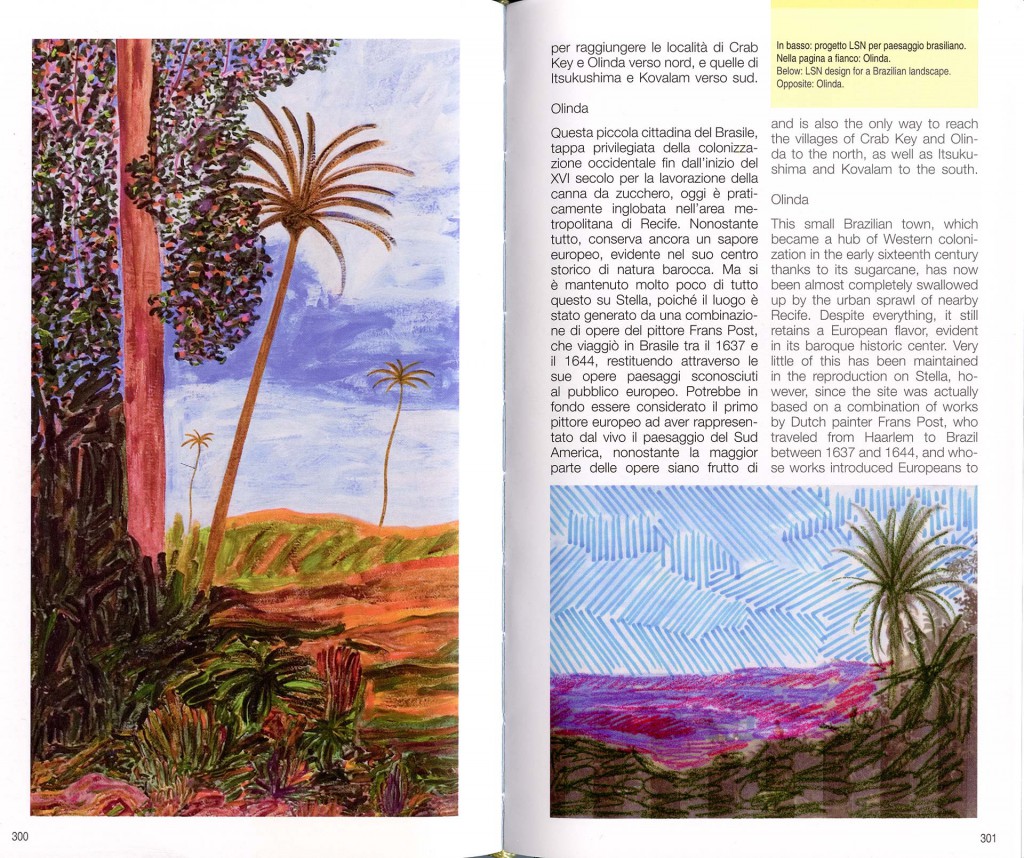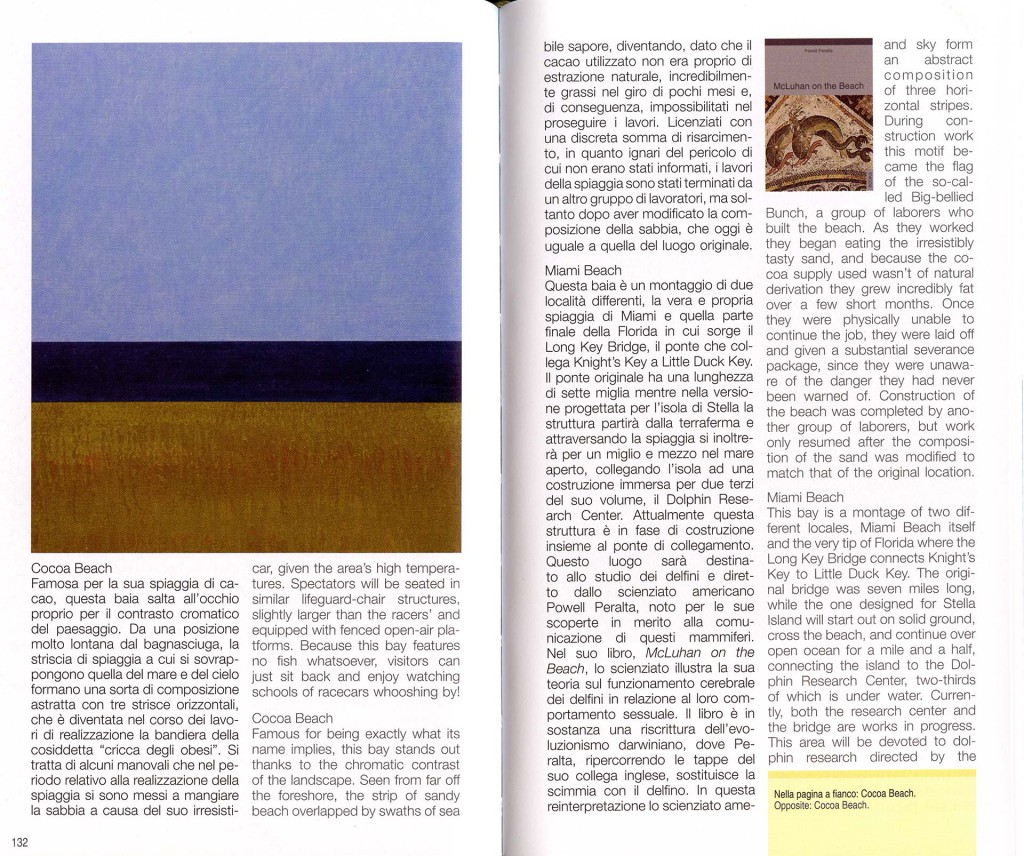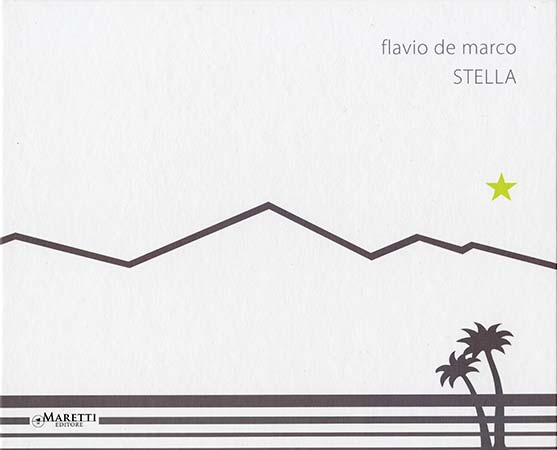“The perfect shape of the star, which characterized ideal city’s urban planning during the Renaissance, has been chosen by Flavio de Marco for his island-that-does-not-exists, the non-place of all possible landscapes, without limits of space and time and without aesthetic hierarchies. The project was developed both from an artistic point of view, through a series of paintings using computer screen as diaphragm of the relationship between man and nature, and from a literary point of view, through a book that can be used as virtual tour guide and at the same time as declaration of poetics.”
Maria Vittoria Marini Clarelli
(from “An Island as a Landscape Design Software”, in the catalogue of the show “Flavio de Marco.Stella” at Galleria nazionale d’arte moderna in Rome, 2014)
The entire history of painting can be seen as the experience of this glance on the world from a window. The problem of Flavio de Marco, who for over fifteen years has been wondering about the meaning of painting today, it’s still unsolved. Within which window can the artist look at the world today? What can be seen within this window? What images can appear? What landscape can be drawn within the window of contemporary world? […] Having a land, in painting, means to have the possibility of a landscape; it means to be able to imagine space opening up in front of the eyes once the window is open. Flavio de Marco, after fifteen years [since 1999], has managed to open the window wide, and at the end of the night, he has seen a landscape again.
Federico Ferrari
(from “On window”, in the catalogue of the show “Flavio de Marco.Stella” at Galleria nazionale d’arte moderna in Rome, 2014)
04.06.2014 - Opening of the exhibition "Stella" at Galleria nazionale d'arte moderna in Rome.
“Stella was born as a book about an artificial island built in the Aegean, which is far more advanced in terms of planning and technology, than Palm Islands, those islands that have been under construction for some years in the UAE. The island’s peculiarity, as Flavio de Marco said -with passion and foresight embracing the fictional dimension – is to propose a repertoire of sophisticated representations of real landscapes among the most attractive ones in the world, alongside a selection of landscapes that belong to the categories of spirit and art (some of them were “modeled” on works by Dhal, Rousseau, Modersohn, Klimt and others). They all are miraculously enclosed in just one “Super-place”. Stella is indeed a “Super-place”, an excellent example of engineering landscape, an evolved product of a precise planning, on the verge of pedantry, which defined its extension, nature, functions, activities, leaving nothing to chance. It is a “Super-place” also because it has “super-accessorizes” that make it unique: airports, heliports, an intricate but highly efficient road network that connects the central hubs nodes of the island, as well as hotels, shopping centers, leisure centers, places for erotic consumption, restaurants and food distribution centers that materialize in a few minutes getting to the end user without any pecuniary nor human mediation. Here’s why, Stella is a “Super-place” populated by end users (to put it with an effective metaphor), divided between tourists and residents, for whom everything was designed and programmed.”
Adriana Polveroni
(from “A Star between Hubris and Fiction”, in the catalogue of the show “Flavio de Marco.Stella” at Galleria nazionale d’arte moderna in Rome, 2014)
